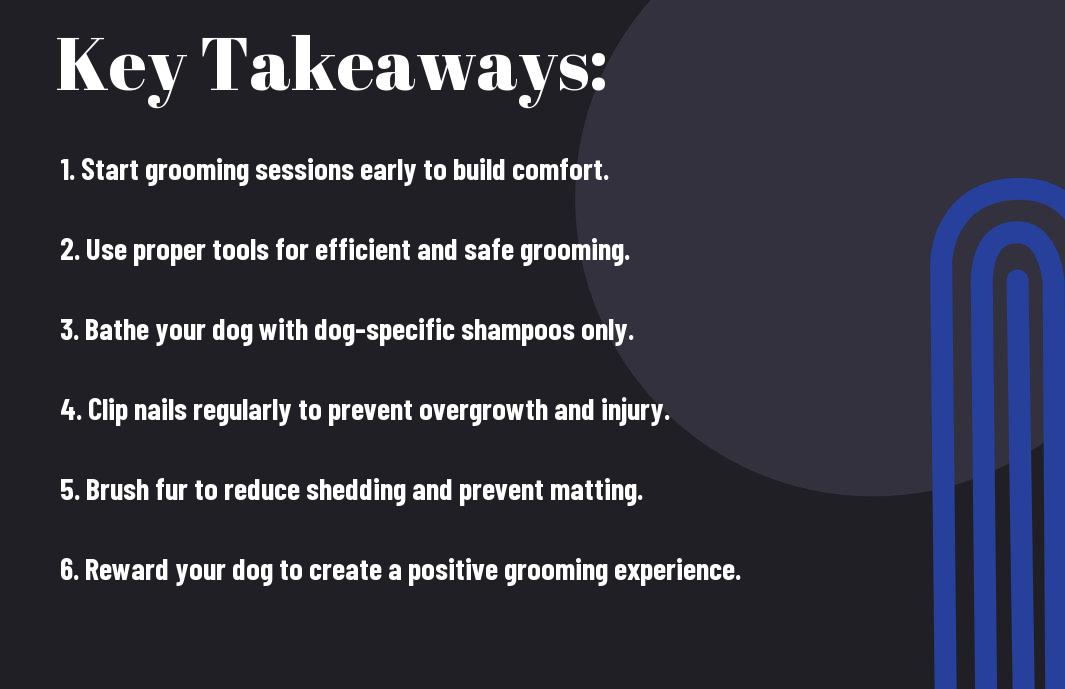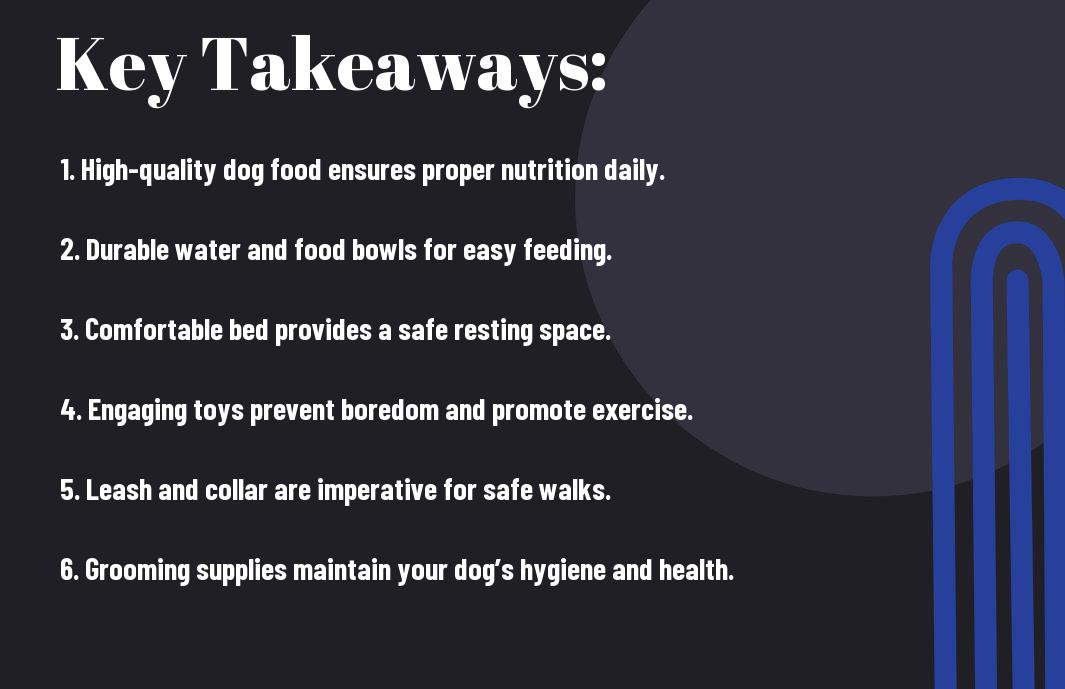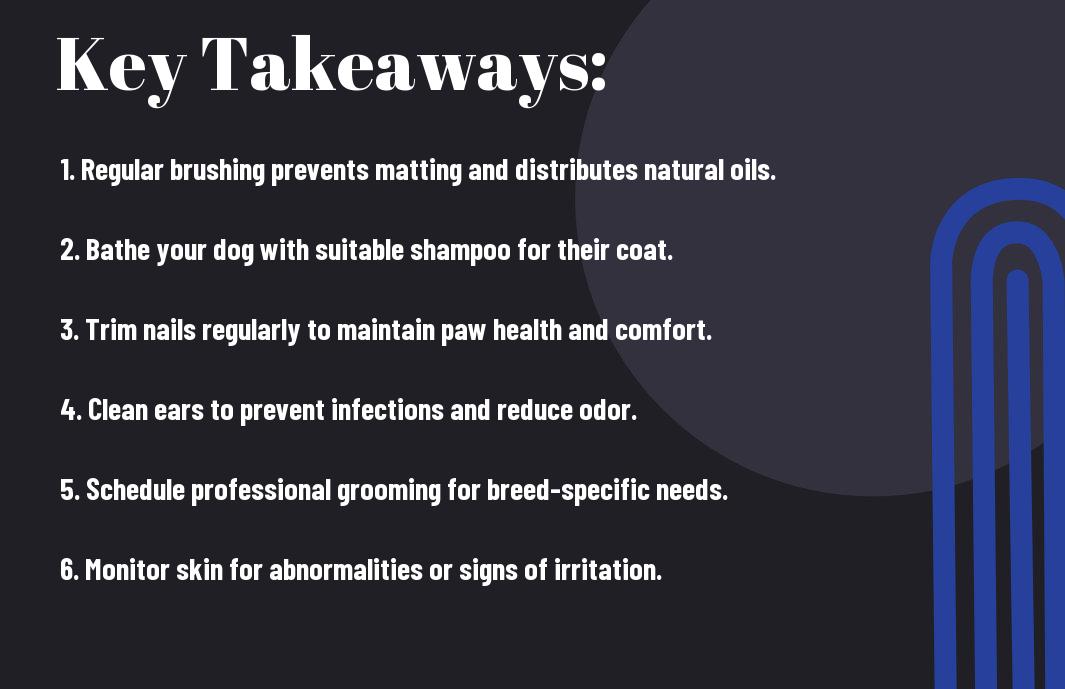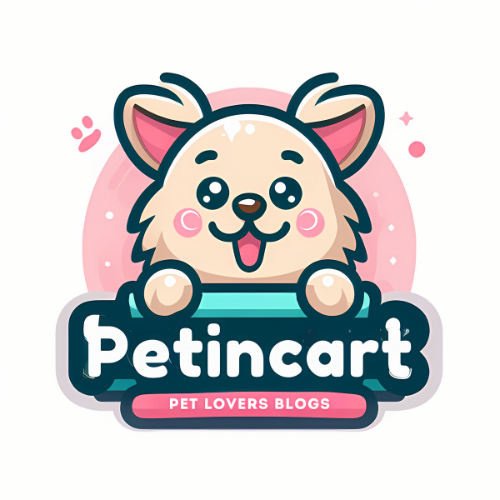DIY grooming not only saves you money, but it also strengthens the bond between you and your furry friend. By mastering some basic techniques, you can keep your dog looking and feeling healthy and happy. In this blog post, you’ll discover vital grooming tools, tips for handling anxiety during grooming, and how to recognize potential hazards while caring for your pet’s coat, nails, and ears. With the right knowledge and approach, you can transform grooming into a positive experience for both you and your dog.

The Importance of Regular Grooming
Your dog’s grooming routine plays a significant role in maintaining their overall health and happiness. Regular grooming not only keeps your pet looking their best but also prevents various health issues that may arise from neglect. By incorporating grooming into your dog’s routine, you help ensure they remain comfortable, clean, and free from potential illnesses or skin conditions that could lead to more serious complications down the line.
Health Benefits for Your Dog
About regular grooming, it helps you to identify any potential health issues early on. For example, brushing your dog’s coat regularly helps to remove dead hair, dirt, and parasites, promoting healthy skin and fur. Additionally, grooming allows you to check for abnormalities like lumps, bumps, or skin irritations that may require veterinary attention. Keeping your dog’s ears clean and nails trimmed also prevents infections and discomfort, significantly enhancing your dog’s quality of life.
Mental Well-being of Your Pet
Your dog’s mental well-being is just as important as their physical health. Regular grooming can serve as a calming routine, reducing anxiety and stress in your pet. The process of being groomed can also provide an opportunity for your dog to relax, especially when combined with gentle handling and positive reinforcement. Engaging in grooming activities regularly can help your dog feel safe and secure within their environment, contributing to overall happiness.
Your dog thrives on routine and stability. By establishing a regular grooming schedule, you provide them with a structured activity that contributes to their sense of well-being. This not only keeps them looking their best but also serves as a key component in their everyday happiness.
Strengthening the Bond Between You and Your Dog
Across many studies, it has been shown that spending quality time with your dog through grooming strengthens the bond you share. This time allows for unparalleled interaction, transforming grooming from a mundane task into an opportunity for affectionate connection. When you groom your dog, you are not just caring for their physical needs but also nurturing the emotional relationship between you two. The shared time can lead to increased trust and a deeper emotional connection.
Importance cannot be overstated when it comes to forming a lasting bond with your dog. As you groom your pet, the gentle touch, attention, and affection you provide during this time establishes a relationship built on love and trust — not just necessity. This connection can lead to improved behavior and a happier pet overall, ensuring that both you and your dog enjoy the grooming process together.
Essential Grooming Tools
The right grooming tools can make a significant difference in your dog’s grooming experience. Whether you’re dealing with a long-haired breed that requires frequent brushing or a short-haired pup that just needs the occasional bath, having the imperative tools at your disposal ensures that you can perform your grooming routine efficiently and safely. This chapter will guide you through the key equipment you should have on hand for a successful DIY dog grooming session.
Brushes and Combs
Before you probe grooming, it’s important to have the right brushes and combs tailored to your dog’s specific coat type. For long-haired breeds, a slicker brush or a pin brush helps detangle knots and removes loose hairs effectively. On the other hand, short-haired breeds may only require a bristle brush or a rubber grooming mitt to remove loose fur and distribute natural oils. Investing time in selecting the correct brush will not only improve the quality of the grooming session but will also keep your dog comfortable.
Additionally, having a comb can be beneficial for finishing touches or for working through small tangles in your dog’s coat. Make sure to choose a comb with both wide and narrow teeth so you can tackle various coat textures and lengths efficiently.
Clippers and Scissors
By incorporating clippers and scissors into your grooming arsenal, you can achieve a polished look for your dog. Clippers are ideal for trimming large areas and providing a uniform length. Look for a clipper that suits your dog’s coat type; those with thicker fur may require a more powerful machine, while finer coats may prefer lighter-duty options. Scissors, particularly thinning shears, are fantastic for achieving a soft finish and removing excess bulk where needed.
But investing in quality clippers and scissors is imperative for achieving the best results. Dull blades can tug at your dog’s hair and create an uncomfortable experience, which may lead to anxiety during grooming. Regular maintenance, like oiling blades and keeping them clean, will ensure that tools remain effective and your dog has a positive grooming experience.
Nail Trimmers
With the right nail trimmers, keeping your dog’s paws in check becomes a straightforward task. There are different styles of nail trimmers available, including scissor-style and guillotine-style, so choose one that you feel comfortable using. Regularly checking and trimming your dog’s nails is imperative for their health, as overgrown nails can lead to pain and difficulties in walking.
Plus, make sure you know how to identify the quick, the sensitive part inside the nail that contains blood vessels and nerves. Avoid cutting too close to the quick to prevent causing bleeding and discomfort. If your dog has light-colored nails, the quick is often easy to see, while darker nails may require careful trimming in small increments.
Bathing Supplies
Along with your grooming tools, having the right bathing supplies will make a world of difference. Choose a high-quality dog shampoo that suits your dog’s skin type—whether they’ve got sensitive skin or require a deep-cleaning formula. Don’t forget a good conditioner to keep your dog’s coat shiny and manageable. Also, consider investing in a non-slip bath mat to ensure your dog feels secure during bath time.
Nail trimming supplies should also be a part of your bathing imperatives. Bathing your dog not only helps rinse away dirt and debris but also offers an opportunity to check for any abnormalities or skin conditions. Regular baths can keep your dog’s coat looking vibrant, but be cautious not to bathe too frequently as it can strip natural oils from their skin.
Additional Accessories
One way to enhance your dog grooming experience is to invest in additional accessories. Grooming gloves can help you remove loose fur while petting your dog, making the process enjoyable for you both. Likewise, using a mild deodorizing spray can refresh your dog’s coat in between baths, ensuring they smell great without a full wash. These little touches can go a long way in keeping your furry friend clean and comfortable.
Grooming tools aren’t just about brushes, clippers, and trimmers; sometimes it’s the little things that matter the most. Accessories like doggy aprons can keep you clean while giving you easy access to your grooming tools, making the process smoother and more efficient.

Preparing Your Dog for Grooming
To ensure a smooth grooming session, it’s important to prepare your dog adequately. You want your pup to feel comfortable and relaxed, which can greatly affect the grooming process. Start by choosing a quiet, well-lit area free from distractions where you can perform the grooming tasks. Have all your grooming supplies ready, such as brushes, clippers, and bathing products, to minimize interruptions and keep your dog calm during the process.
Getting Your Dog Comfortable
The first step in getting your dog comfortable is to associate grooming with positive experiences. Spend some time just petting and playing with your dog before you begin. You can introduce grooming tools gradually; let your dog sniff the brush or comb before using it. Incorporating treats and praise during this introduction can help create a positive association, making your dog more receptive to grooming.
The environment also plays a significant role in your dog’s comfort. Ensure the space is non-slip, especially if you’re working with larger breeds. This makes your dog feel secure and less anxious. If your dog shows apprehension, try using calming aids such as music or calming sprays designed specifically for dogs to help reduce stress levels during grooming.
Bathing Techniques
Around bath time, it’s important to have everything ready to make the experience as pleasant as possible for your dog. Use lukewarm water and start by wetting your dog gently, avoiding ears and eyes. Apply a dog-friendly shampoo, working from neck to tail, ensuring to lather well to clean all areas. Rinse thoroughly, since leftover shampoo can irritate your dog’s skin.
Another important aspect of bathing is using the right products. Choose a shampoo specifically formulated for dogs, as human shampoos can be too harsh and strip away natural oils from their skin. If your dog has sensitive skin or allergies, consult your veterinarian for recommendations on hypoallergenic options. Additionally, make sure to have towels or a dog drying blanket handy for after-bath snuggles—this can help your dog feel warm and cozy following the bath.
Drying Methods
Above all, drying your dog properly after a bath is crucial to maintaining skin health. You can use a soft towel to gently blot and remove excess water from your dog’s coat. For larger breeds or those with thick fur, consider using a pet-specific blow dryer on a low setting to avoid startling your pet. Hold the dryer at a safe distance to prevent overheating or discomfort.
A great alternative to traditional drying methods is to utilize a dog dryer or a high-velocity pet dryer, which can be incredibly effective for more significant fur deposits. This method will not only speed up the drying process but also help detangle their fur, reducing the chances of mats and tangles later. However, if your dog is particularly nervous about loud noise, it’s best to stick with towel drying for a calming experience.

Grooming Different Dog Breeds
After discovering the importance of grooming in maintaining your dog’s health and appearance, it’s vital to understand that each breed requires a different approach. Whether your furry friend has long, short, or mixed fur, the methods you use can vary significantly. By tailoring your grooming routine to your dog’s specific breed characteristics, you’ll not only make the task easier for yourself but also create a more pleasant experience for your pet.
Grooming Long-Haired Breeds
Beside the stunning looks that long-haired breeds possess, they also require diligent grooming to prevent matting and tangles. Regular brushing, ideally every day, helps to keep their coats healthy and manageable. Using a slicker brush or a wide-tooth comb can effectively remove loose hair and prevent the formation of mats. Be gentle around sensitive areas, such as the ears and underbelly, to ensure your dog feels comfortable during the grooming process.
Additionally, you may want to consider scheduling professional grooming sessions every few months. This is especially beneficial for breeds like Afghan Hounds or Shih Tzus, as a skilled groomer can handle any complex grooming needs while giving your dog a fresh look. Maintaining the correct grooming schedule based on your dog’s specific coat type will keep their fur looking vibrant and reduce shedding significantly.
Grooming Short-Haired Breeds
To keep short-haired breeds like Beagles or Boxers looking their best, a different approach can be taken. These breeds may not require as much upkeep as their long-haired counterparts, but regular brushing is still vital to remove loose fur and help distribute natural oils throughout their coat. A rubber grooming mitt or a bristle brush can be quite effective for achieving this. A quick session once a week will suffice for most short-haired dogs.
Further, pay attention to your dog’s skin and dietary needs, as a healthy coat often reflects overall health. Bathing should be done sparingly—around every two to three months—to avoid stripping their coat of necessary oils. If you notice dry patches or excessive shedding, consider consulting your veterinarian to rule out any underlying issues or nutritional deficiencies related to skin and coat health.
Specific Needs of Mixed Breeds
The grooming requirements for mixed breeds can vary greatly depending on their unique combinations of parent breeds. Some mixed breeds may inherit the thick, wavy coats of one parent, while others might have the sleek, short fur of another. This means that you need to assess your mixed breed’s coat type to determine the appropriate grooming strategy. Regular brushing, nail clipping, and ear cleaning should become part of your routine, tailored to address your specific dog’s needs.
Moreover, mixed breeds may also require adjustments in grooming practices as they age or if their coat changes due to seasonal shedding. Keeping an eye on their grooming needs will help you adjust your routine accordingly, ensuring they stay happy and healthy regardless of their coat type.
ShortHaired breeds are often less prone to matting compared to long-haired varieties, which simplifies the grooming process. However, keeping their ears clean and regularly checking for skin irritations is still important. Make it a habit to incorporate regular grooming into your routine, as this not only benefits your pet’s appearance but also strengthens your bond with them. Investing time in understanding your dog’s specific grooming needs will pay off in the long run, resulting in a healthy and happy companion.
Nail Care and Paw Maintenance
Not every dog owner realizes the importance of proper nail care and paw maintenance. Keeping your dog’s nails trimmed is vital for their health and wellbeing. When nails are left unchecked, they can grow too long, causing your dog discomfort while walking and even leading to painful injuries. Long nails can also affect their posture and gait, potentially resulting in joint issues down the line. Ensuring your dog’s nails are kept at an appropriate length can greatly improve their quality of life.
Importance of Nail Trimming
An additional reason to prioritize nail trimming is that it prevents damage to your home and belongings. Dogs with long nails are more likely to scratch floors, furniture, and even you! Regular nail maintenance helps keep your living space safe, and it can also prevent your pet from accidentally injuring themselves. Moreover, regular nail trimming can prevent potential health issues, such as infections or nail bed irritations, that may arise from overly long or cracked nails.
How to Properly Trim Nails
The best approach to trimming your dog’s nails is to find a calm environment where your pet feels secure. Begin by gently holding their paw and identifying the quick—the pink area in the nail that contains blood vessels and nerves. It’s crucial to avoid cutting into the quick, as this can cause bleeding and pain. Use a sharp, dog-specific nail clipper for a clean cut, and trim a small amount at a time to prevent going too deep. If your dog is particularly anxious, consider employing the help of a friend to hold them still during the process.
Maintenance of your dog’s nails doesn’t stop at trimming. It’s important to regularly inspect their paws for any signs of injury, such as cuts or infections. After a trimming session, be sure to provide positive reinforcement with treats or praise to make the experience pleasant for your dog. Some dogs also benefit from gentle filing after trimming to smooth out any sharp edges and prevent snagging. Incorporating this into your routine will help your dog associate nail care with a positive experience.
Caring for Your Dog’s Paws
Trimming your dog’s nails is only part of the comprehensive care routine you should maintain for their paws. Regularly checking between your dog’s paw pads for foreign objects like stones, burrs, or even ice can prevent discomfort and infection. If you live in an area with harsh weather, consider using protective balms or booties to shield their paws from extreme temperatures, hot pavement, or salty surfaces in winter.
With consistent attention to your dog’s paws, you can make a notable difference in their comfort and mobility. Routine care will help keep their paws dry and healthy. Additionally, ensure to monitor their weight and overall health, as overweight dogs can experience more strain on their joints, making proper paw care even more vital. Keeping your dog comfortable in their own skin with proper nail and paw maintenance leads to happier, healthier days ahead.
Common Grooming Mistakes to Avoid
Unlike what many pet owners may think, grooming your dog is not just a simple task of brushing and bathing once in a while. In the matter of dog grooming, there are several common mistakes that can lead to discomfort, skin issues, and even behavioral problems. Being aware of these mistakes can help you provide the best care for your furry friend while avoiding unnecessary complications.
Over-Bathing Your Dog
Before you grab that shampoo, consider how often you bathe your dog. Over-bathing can strip the natural oils from their skin, leading to dryness and irritation. While it’s important to keep your dog clean, most dogs only need a bath once every few weeks or as needed, depending on their breed, coat type, and lifestyle. Frequent bathing can cause more harm than good, so be sure to space out bath times appropriately.
Before using any products, check if they are suitable for your dog’s specific skin type and coat condition. Opt for a high-quality, dog-friendly shampoo that maintains your pet’s natural oils. If you’re unsure, consult with your veterinarian for tailored advice on the best bathing schedule and products for your dog.
Neglecting Ears and Teeth
Your dog’s ears and teeth often don’t receive the attention they deserve during grooming sessions. Ignoring routine cleaning of these areas can lead to serious health issues such as ear infections and dental disease. Make it a habit to inspect your dog’s ears regularly for dirt, wax buildup, or any signs of infection, and use a gentle ear cleaner recommended by your vet. In the matter of dental care, brushing your dog’s teeth regularly can significantly reduce the risk of periodontal diseases and maintain their overall health.
Avoid skipping dental hygiene for your dog; this is a common mistake that can have significant health consequences. Many dog owners don’t realize that bad breath can be a sign of underlying dental issues, and neglecting to clean their teeth can lead to painful infections. Implementing a routine that includes ear and dental care can help ensure your dog remains healthy and comfortable.
Using Incorrect Tools
Around your grooming sessions, the tools you use can significantly impact the quality of the grooming process and your dog’s comfort. Using the wrong brushes, clippers, or scissors can lead to discomfort or even injuries. It’s important to invest in grooming tools specifically designed for your dog’s coat type and size. For example, long-haired dogs require different brushes than short-haired breeds, and using the correct tool can make brushing a smooth and enjoyable experience for your furry friend.
Indeed, selecting the appropriate tools also means being mindful of their condition. Always ensure your grooming equipment is clean and in good working order. Dull blades on clippers or damaged brushes can cause tugging or pulling on your dog’s fur, leading to stress and anxiety. Equipping yourself with the right tools not only enhances the grooming experience but also fosters a bond of trust between you and your dog.
Final Words
Conclusively, by incorporating these DIY dog grooming tips and tricks into your routine, you can enhance not only your dog’s appearance but also their overall health and well-being. Regular grooming sessions allow you to monitor your pet for any skin issues, parasites, or other health concerns that may require professional attention. Additionally, maintaining a clean and well-groomed dog can improve their comfort and happiness, creating a more enjoyable experience for both you and your furry friend.
As you begin on your grooming journey, be patient and take your time to understand your dog’s specific grooming needs. Investing in quality tools and establishing a consistent grooming schedule will yield positive results. With practice, you’ll feel more confident in your abilities, resulting in a trusting bond with your pet. Embrace the grooming experience as an opportunity to connect with your dog while ensuring they look and feel their best.
Q: What tools do I need for DIY dog grooming at home?
A: To groom your dog effectively at home, you will need several crucial tools. First, a good quality brush that suits your dog’s coat type (slickers for long fur, bristle brushes for short fur). Second, a pair of dog clippers or scissors for trimming, especially around sensitive areas like paws and ears. You should also invest in nail clippers or a grinder to keep your dog’s nails manageable. Additionally, have dog shampoo, conditioner, and a towel ready for bath time. Finally, consider using grooming wipes for quick clean-ups in between full grooming sessions.
Q: How often should I groom my dog at home?
A: The frequency of grooming your dog at home largely depends on the breed and coat type. Generally, dogs with long, thick fur may need grooming every 4-6 weeks to prevent matting, while short-haired breeds might only need grooming every few months. Regular brushing helps to remove loose hair, dirt, and debris, which can be done weekly. Bathing can be done every month or as needed, particularly if your dog enjoys outdoor activities and gets dirty. Always observe your dog’s coat and skin condition; if you notice tangles or dirt buildup, it’s a good time to groom.
Q: What are some tips for making the grooming process easier for my dog?
A: To make the grooming experience more enjoyable for your dog, start by creating a positive environment. Use treats and praise to associate grooming with a rewarding experience. Choose a comfortable, non-slip surface for grooming, and consider using a grooming table if you have a larger dog. Let your dog get accustomed to the tools before starting; show them the brush or clippers without using them right away. Additionally, establish a routine that includes grooming when your dog is calm, perhaps after a long walk or playtime, to help them relax. Patience is key, so take breaks if your dog gets restless.










